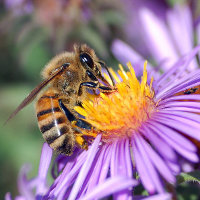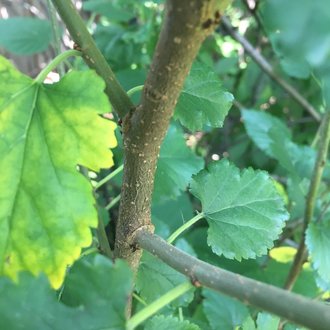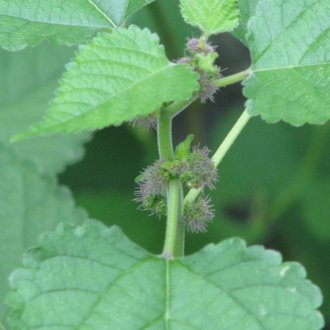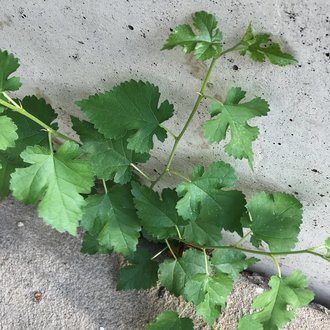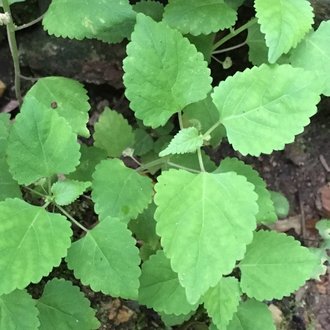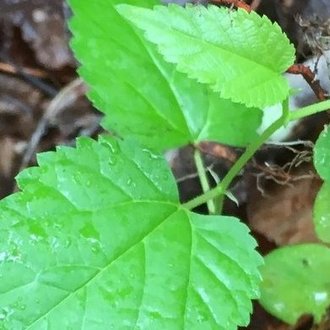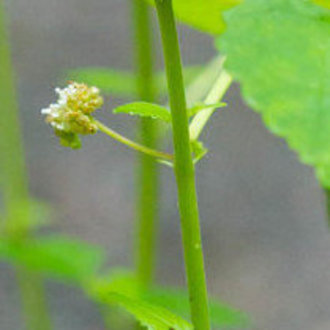White Mulberry vs Hairy Crabweed
This guide is under construction and has not been published yet. It may have errors. When in doubt, double-check other sources for definitive ID.Although these plants are totally dissimilar at maturity, young white mulberries are easily confused with hairy crabweed, leading to its common name "Mulberry weed". Young plants are easily distinguished by checking for woody growth.
White Mulberry (Morus alba) | Hairy Crabweed (Fatoua villosa) |
A tree native to northern China; introduced in North America, where it is widely considered invasive and hybridizes with the native red mulberry. | A weedy annual native from southeast Asia through Australia, and introduced in north America, where it has become invasive, especially in container nurseries. |
Woody plant. Plants do not flower until reaching tree or shrub height, after multiple years of age. Plants already developing wood during their first season. Photo © KatieLMiller, CC BY 4.0. | An annual that flowers in summer to early fall of its first season of growth. Photo © DM, CC BY 4.0. |
Leaves often unlobed, but can be irregularly lobed. Photo © Mark, CC BY 4.0. | Leaves always unlobed. Photo © Timothy Gerla, CC BY 4.0. |
Stipules (a leaf-like structure where the leaf attaches to the stem), when present (usually on new growth), are longer and more conspicuous. Photo © Alona Bookbinder, CC BY-SA 4.0. | Stipules, when present, are smaller and less conspicuous. Photo © Melissa McMasters, CC BY 4.0. |
References & External Resources
These short lists show only links helpful for ID. For a complete list of references and resources also covering other aspects of ecology, visit the links section of the full article on each plant, which is the first entry here.
White Mulberry (Morus alba) | Hairy Crabweed (Fatoua villosa) |
• Morus alba (White Mulberry) | Illinois Wildflowers (About This Site) | No corresponding entry |
• White Mulberry | Virginia Tech Dendrology Factsheets (About This Site) | No corresponding entry |
• Morus alba | Biota of North America Project (BONAP) (About This Site) | • Fatoua villosa | Biota of North America Project (BONAP) (About This Site) |
No corresponding entry |

